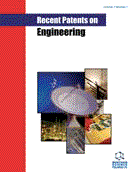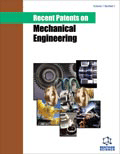Abstract
Background: Prostate cancer (PCa) has become a serious threat to the health of men in the world. Combining the advantages of magnetic resonance imaging (MRI) and transrectal ultrasound (TRUS) images for the diagnosis and treatment of prostate is a hot research topic in recent years and image registration is an important step in image fusion.
Objective: To survey recent patents and academic papers relating to registration methods which use preoperative MR images and intra-operative TRUS images of prostate as sources of data to be registered and provide a reference for those searching for literature on a specific application. Method: In this paper, we review the current status of registration methods for MRI-TRUS imageguided interventions of prostate mainly in the aspects of feature space, geometrical transformation, optimization strategy, image dimensionality, public availability and evaluation methodology. Results: The registration methods used in prostate intervention with the guidance of MRI-TRUS image in the last 15 years are classified and analysed according to their respective characteristics. The current and future development in regard to the issues of this field is discussed and explored. Conclusion: MR and US image registration method used in prostate intervention is mainly towards the direction of 3D registration and the registration based on 3D surface has become the mainstream. The local features-based registration, such as the MIND method is a direction of future development. The deformation of prostate is a challenge to the registration of MRI-TRUS images. The simulated annealing algorithm, levenberg-marquardt (LM) algorithm, expectation maximisation (EM) algorithm and iterative closest point (ICP)-like algorithm are often used as the optimization strategy in MRI and TRUS registration. TRE and DSC based on anatomic landmarks are the main methods of evaluation.Keywords: Image registration, MRI, TRUS, prostate intervention, brachy therapy, anatomic landmarks.
Graphical Abstract
Recent Patents on Engineering
Title:Recent Advances in Registration Methods for MRI-TRUS Fusion Image-Guided Interventions of Prostate
Volume: 11 Issue: 2
Author(s): Yongde Zhang*, Jintao Bi, Weixi Zhang, Haiyan Du and Yong Xu
Affiliation:
- Robotics & its Engineering Research Center of Harbin University of Science and Technology, No52. Xufu Road, Nangang District, 150080, Harbin, Heilongjiang Province,China
Keywords: Image registration, MRI, TRUS, prostate intervention, brachy therapy, anatomic landmarks.
Abstract: Background: Prostate cancer (PCa) has become a serious threat to the health of men in the world. Combining the advantages of magnetic resonance imaging (MRI) and transrectal ultrasound (TRUS) images for the diagnosis and treatment of prostate is a hot research topic in recent years and image registration is an important step in image fusion.
Objective: To survey recent patents and academic papers relating to registration methods which use preoperative MR images and intra-operative TRUS images of prostate as sources of data to be registered and provide a reference for those searching for literature on a specific application. Method: In this paper, we review the current status of registration methods for MRI-TRUS imageguided interventions of prostate mainly in the aspects of feature space, geometrical transformation, optimization strategy, image dimensionality, public availability and evaluation methodology. Results: The registration methods used in prostate intervention with the guidance of MRI-TRUS image in the last 15 years are classified and analysed according to their respective characteristics. The current and future development in regard to the issues of this field is discussed and explored. Conclusion: MR and US image registration method used in prostate intervention is mainly towards the direction of 3D registration and the registration based on 3D surface has become the mainstream. The local features-based registration, such as the MIND method is a direction of future development. The deformation of prostate is a challenge to the registration of MRI-TRUS images. The simulated annealing algorithm, levenberg-marquardt (LM) algorithm, expectation maximisation (EM) algorithm and iterative closest point (ICP)-like algorithm are often used as the optimization strategy in MRI and TRUS registration. TRE and DSC based on anatomic landmarks are the main methods of evaluation.Export Options
About this article
Cite this article as:
Zhang Yongde*, Bi Jintao, Zhang Weixi, Du Haiyan and Xu Yong, Recent Advances in Registration Methods for MRI-TRUS Fusion Image-Guided Interventions of Prostate, Recent Patents on Engineering 2017; 11 (2) . https://dx.doi.org/10.2174/1872212110666161201115248
| DOI https://dx.doi.org/10.2174/1872212110666161201115248 |
Print ISSN 1872-2121 |
| Publisher Name Bentham Science Publisher |
Online ISSN 2212-4047 |
 7
7
- Author Guidelines
- Bentham Author Support Services (BASS)
- Graphical Abstracts
- Fabricating and Stating False Information
- Research Misconduct
- Post Publication Discussions and Corrections
- Publishing Ethics and Rectitude
- Increase Visibility of Your Article
- Archiving Policies
- Peer Review Workflow
- Order Your Article Before Print
- Promote Your Article
- Manuscript Transfer Facility
- Editorial Policies
- Allegations from Whistleblowers
- Announcements
Related Articles
-
Beneficiary and Adverse Effects of Phytoestrogens: A Potential Constituent of Plant-based Diet
Current Pharmaceutical Design Vagotomy and Gastric Tumorigenesis
Current Neuropharmacology Inhibitors of Apoptosis Proteins (IAPs) as Potential Molecular Targets for Therapy of Hematological Malignancies
Current Molecular Medicine ERGIC3 Silencing Additively Enhances the Growth Inhibition of BFA on Lung Adenocarcinoma Cells
Current Cancer Drug Targets Design and In vitro Validation of Multivalent Dendrimer Methotrexates as a Folate-targeting Anticancer Therapeutic
Current Pharmaceutical Design Fine Tuning Therapeutic Targeting of the Sphingolipid Biosynthetic Pathway to Treat Atherosclerosis
Current Vascular Pharmacology Application of Genetic Polymorphisms in DNA Repair in the Prediction of Cancer Susceptibility and Clinical Outcome
Current Pharmacogenomics Meet Our Editorial Board Member
Current Cancer Drug Targets Host Innate Immune Responses to Microbial Pathogens
Current Vascular Pharmacology Oxytocin in the Heart Regeneration
Recent Patents on Cardiovascular Drug Discovery Epigenetic Regulation of EMT: The Snail Story
Current Pharmaceutical Design Glucocorticoid Excess Induces Accumulation of Cardiac Glycogen and Triglyceride: Suggested Role for AMPK
Current Pharmaceutical Design Focal Adhesion Kinase as a Cancer Therapy Target
Anti-Cancer Agents in Medicinal Chemistry An Overview on Applications of Gold Nanoparticle for Early Diagnosis and Targeted Drug Delivery to Prostate Cancer
Recent Patents on Nanotechnology Cyclic Nucleotide Phosphodiesterases (PDE) and Peptide Motifs
Current Pharmaceutical Design In Vivo Inhibition of the Estrogen Sulfatase Enzyme and Growth of DMBA-Induced Mammary Tumors by Melatonin
Current Cancer Drug Targets From Systems Biology to Systems Pathology: A New Subspecialty in Diagnostic and Personalized Medicine
Current Pharmacogenomics and Personalized Medicine Impact of microRNAs in Resistance to Chemotherapy and Novel Targeted Agents in Non-Small Cell Lung Cancer
Current Pharmaceutical Biotechnology Signal Transduction Therapy for Cancer - Whither Now?
Current Signal Transduction Therapy subject Index To Volume 3
Current Protein & Peptide Science





















